本文共 1759 字,大约阅读时间需要 5 分钟。
学弟学妹们好,我是帅吴,欢迎来到 图解剑指 Offer 结构化专栏,在这个专栏里我将和大家一起学习如何用结构化的思维来思考、解题、写代码,希望能帮助你即使在面试的时候紧张也能做对。
今天分享的题目来源于 LeetCode 上的剑指 Offer 系列 面试题15. 二进制中1的个数。
题目汇总链接:https://www.algomooc.com/hi-offer
一、题目描述
请实现一个函数,输入一个整数,输出该数二进制表示中 1 的个数。例如,把 9 表示成二进制是 1001,有 2 位是 1。因此,如果输入 9,则该函数输出 2。
示例 1:
输入:00000000000000000000000000001011输出:3解释:输入的二进制串 00000000000000000000000000001011 中,共有三位为 '1'。
示例 2:
输入:00000000000000000000000010000000输出:1解释:输入的二进制串 00000000000000000000000010000000 中,共有一位为 '1'。
示例 3:
输入:11111111111111111111111111111101输出:31解释:输入的二进制串 11111111111111111111111111111101 中,共有 31 位为 '1'。
二、题目解析
我们依旧用 四步分析法 进行结构化的分析。
- 模拟:模拟题目的运行。
- 规律:尝试总结出题目的一般规律和特点。
- 匹配:找到符合这些特点的数据结构与算法。
- 边界:考虑特殊情况。
1、模拟
我们统计一下二进制串 110101110 中有多少个 1,第一个想法就是从左到右一个个的数。
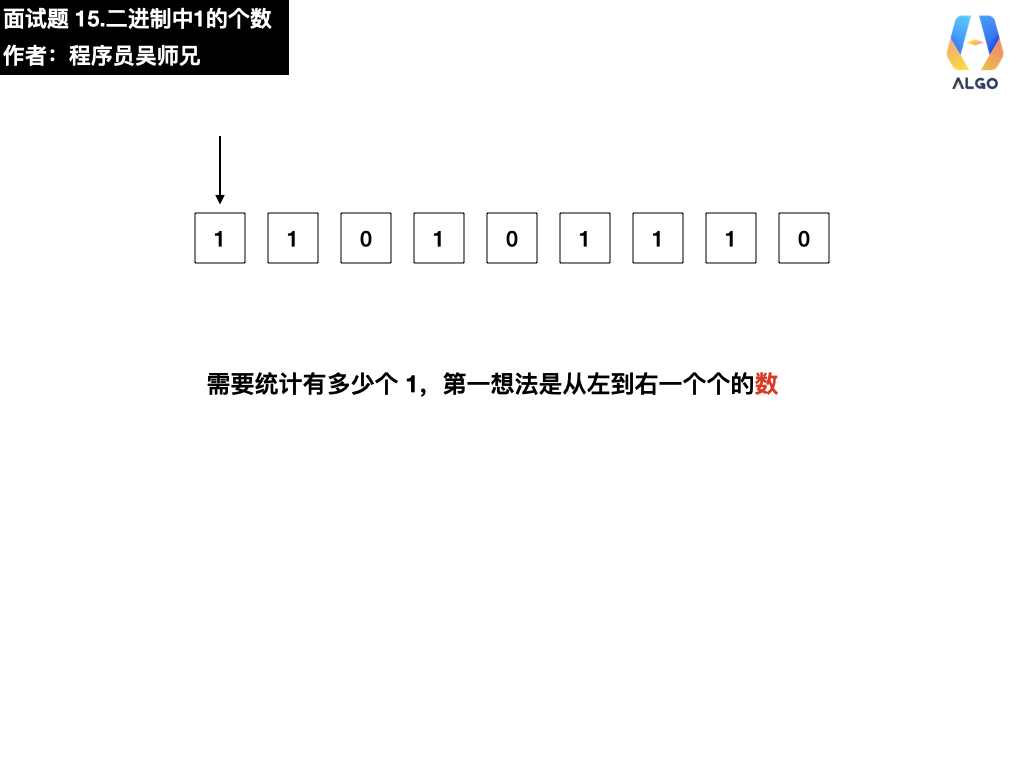
但是由于于上述的数字是二进制的形式,因此无法做到像遍历数组或者链表那样统计,合理的思考就是怎么样做到把进制中的 1 一个个给拎出来去统计,从左到右的拎出来,或者从右到左的拎出来。
所以,此时需要思考二进制的数字有什么特点,能帮助我们做到把 1 一个个单独提出来。
2、规律
如果 n & 1 = 0, 则 n 的最后一位是 0 ;如果 n & 1 = 1, 则 n 的最后一位是 1。
基于这两个特点,可以统计出最后一位是否为 1,如果为 1,则更新记录统计的 1 的个数,然后将 n 右移一位,这样就能统计到原来 n 的倒数第二位,依次操作;如果为 0,则不需要更新记录统计的 1 的个数,直接将 n 右移一位。
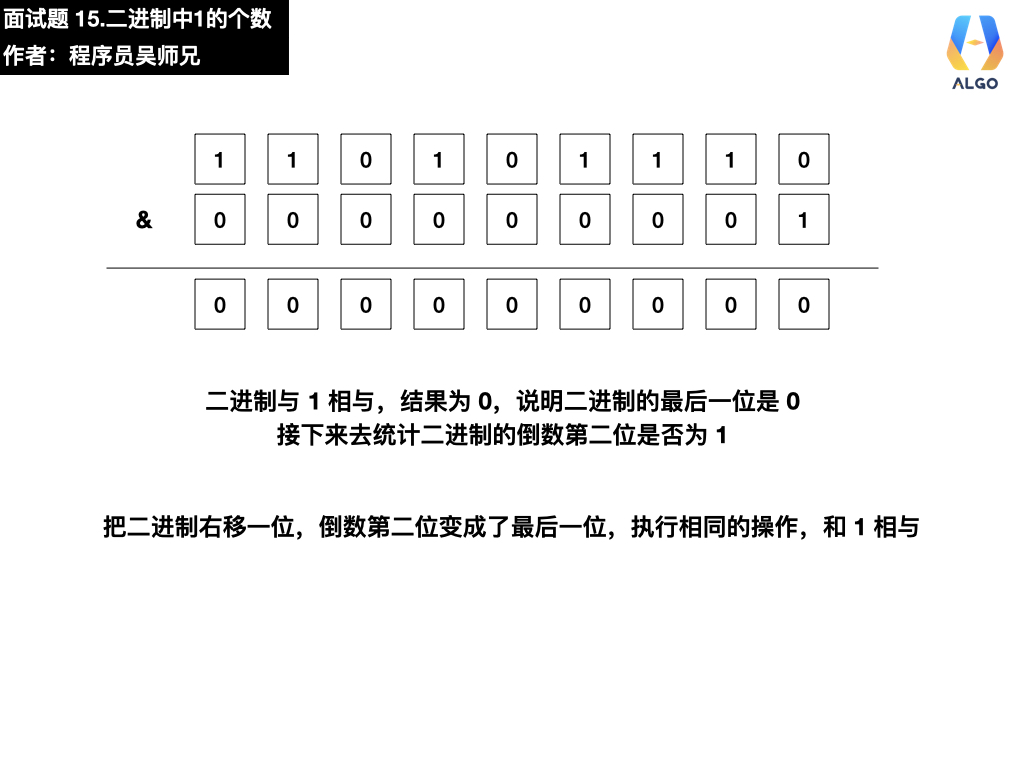
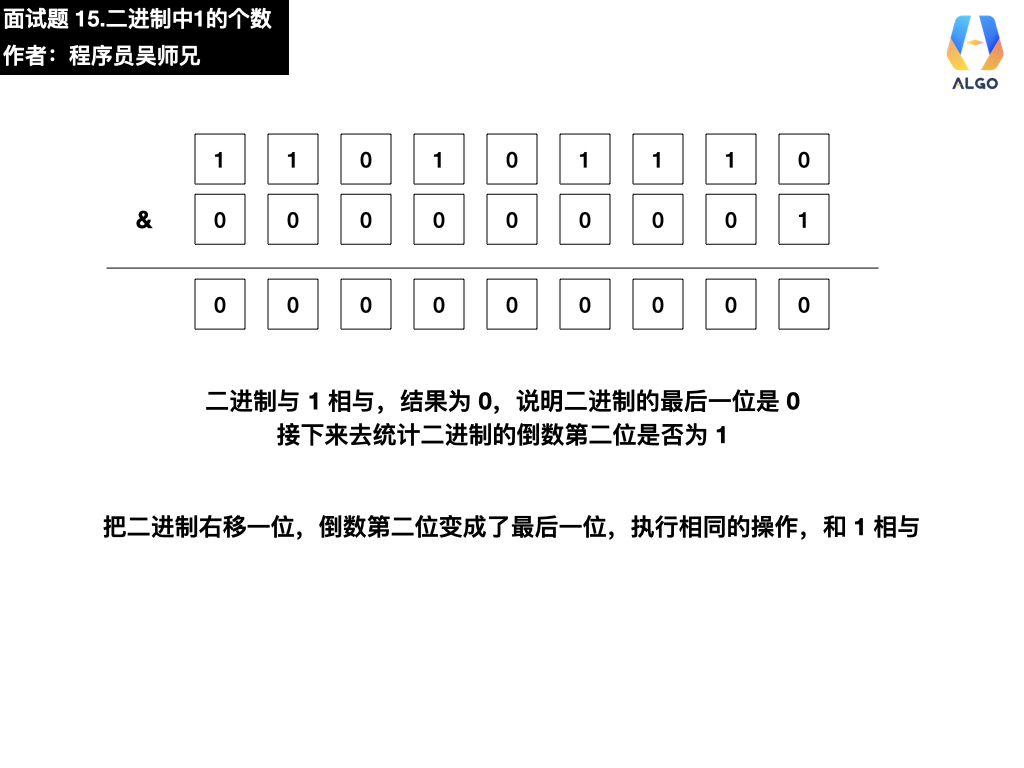

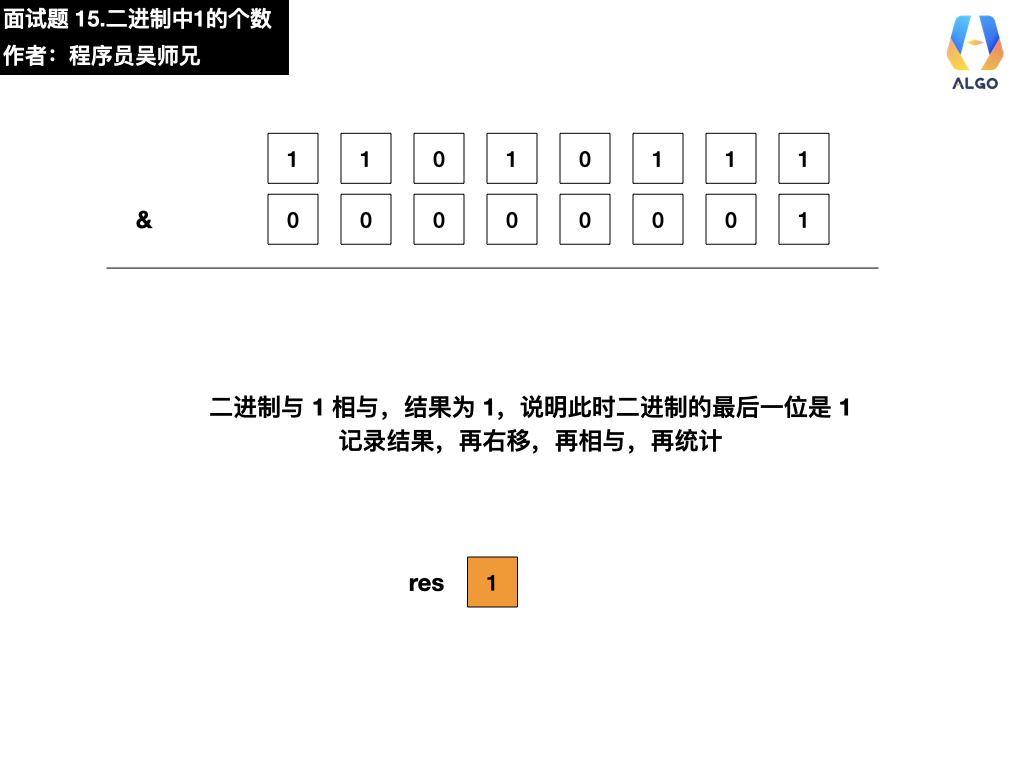
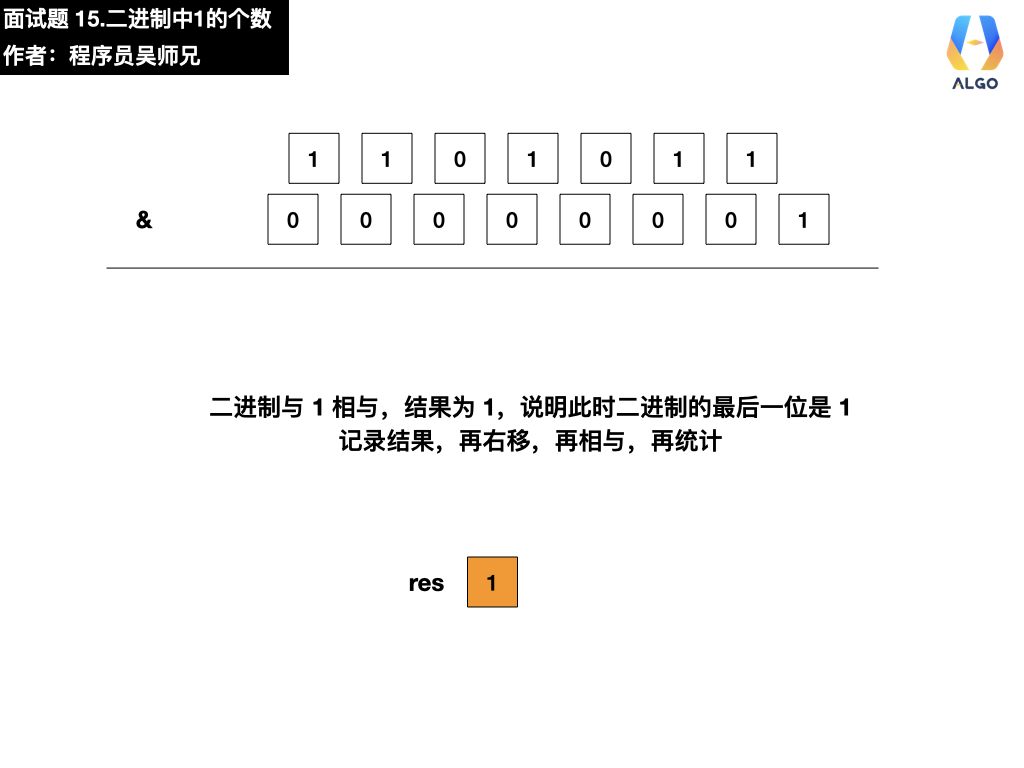
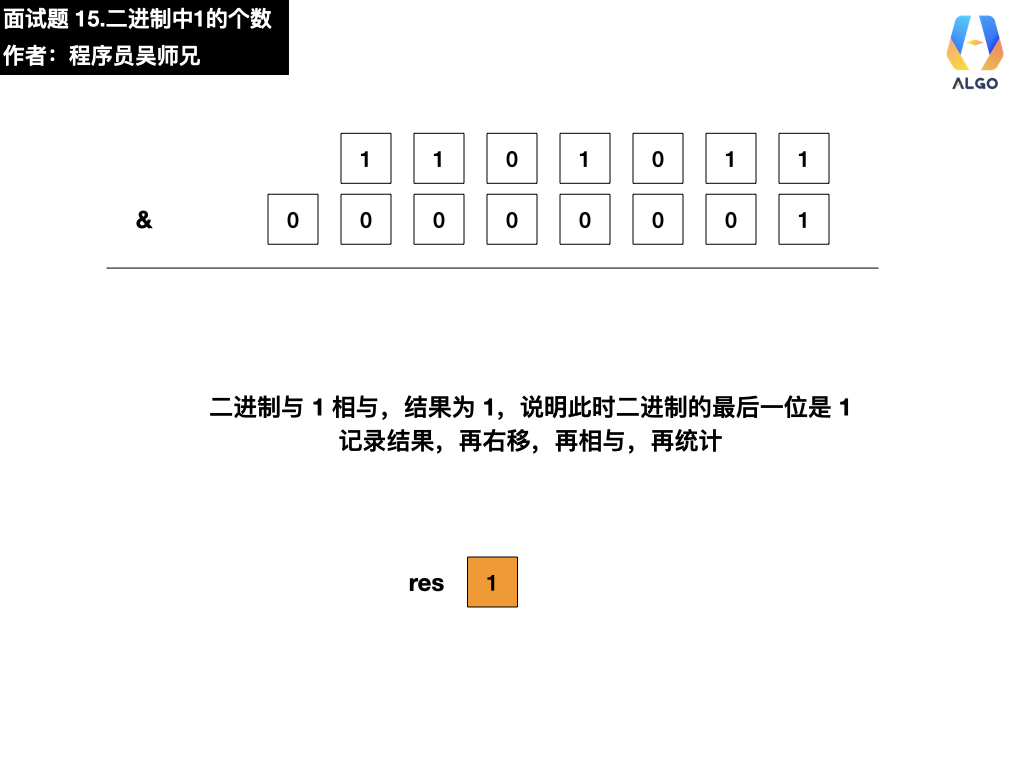


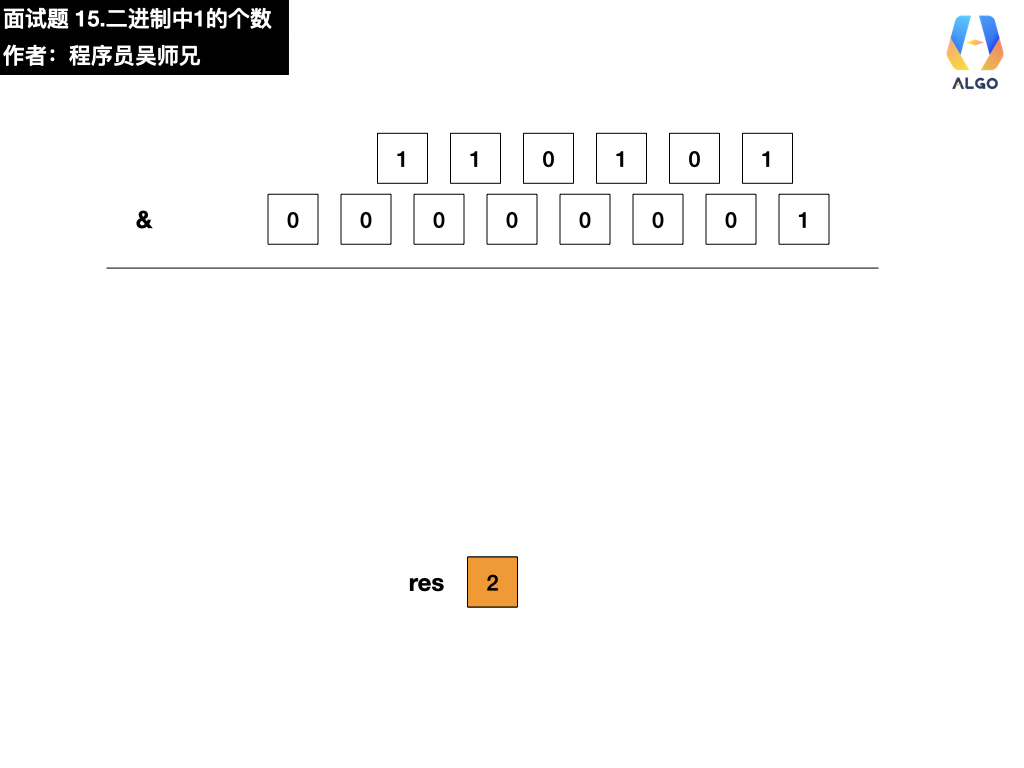

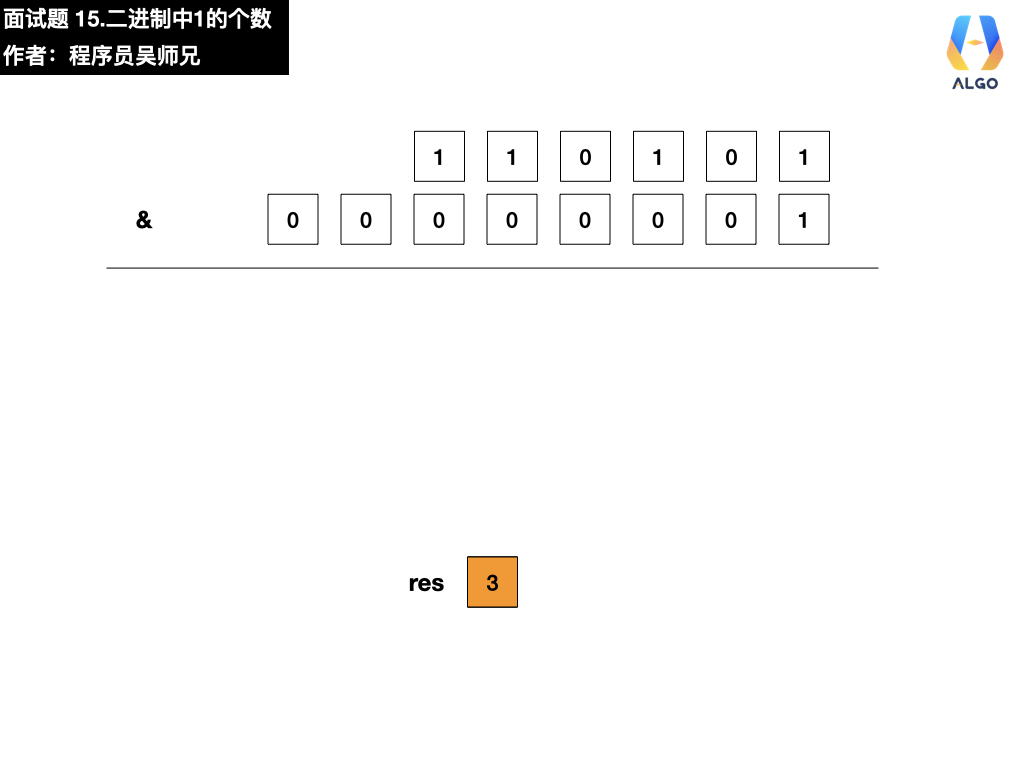
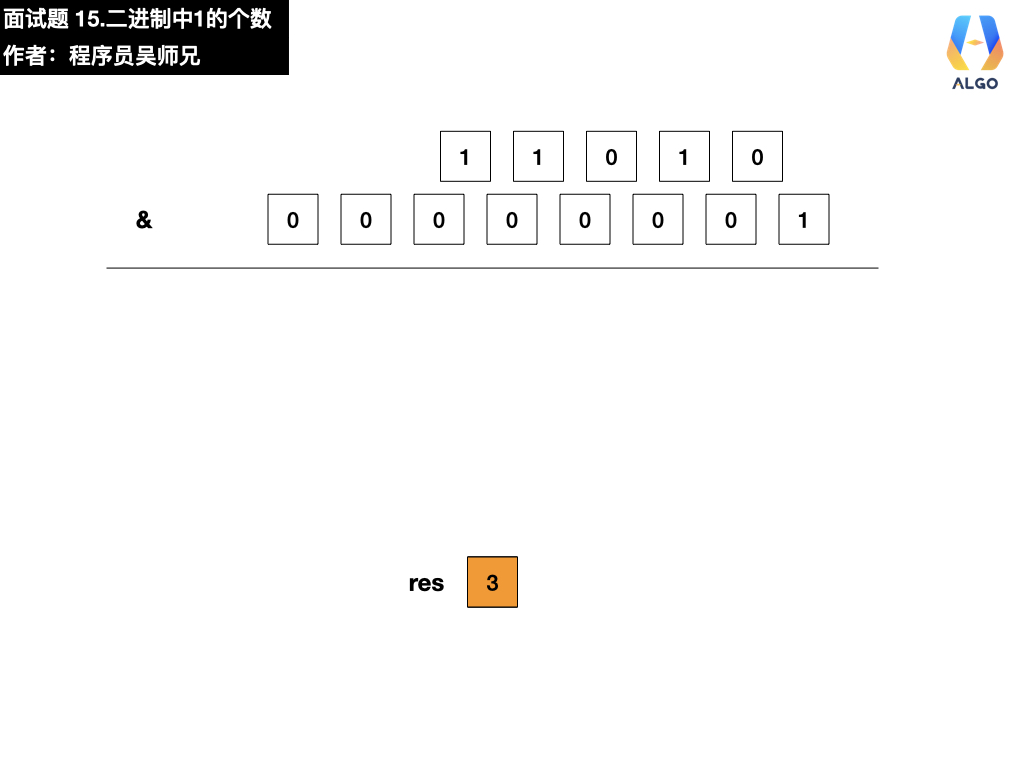
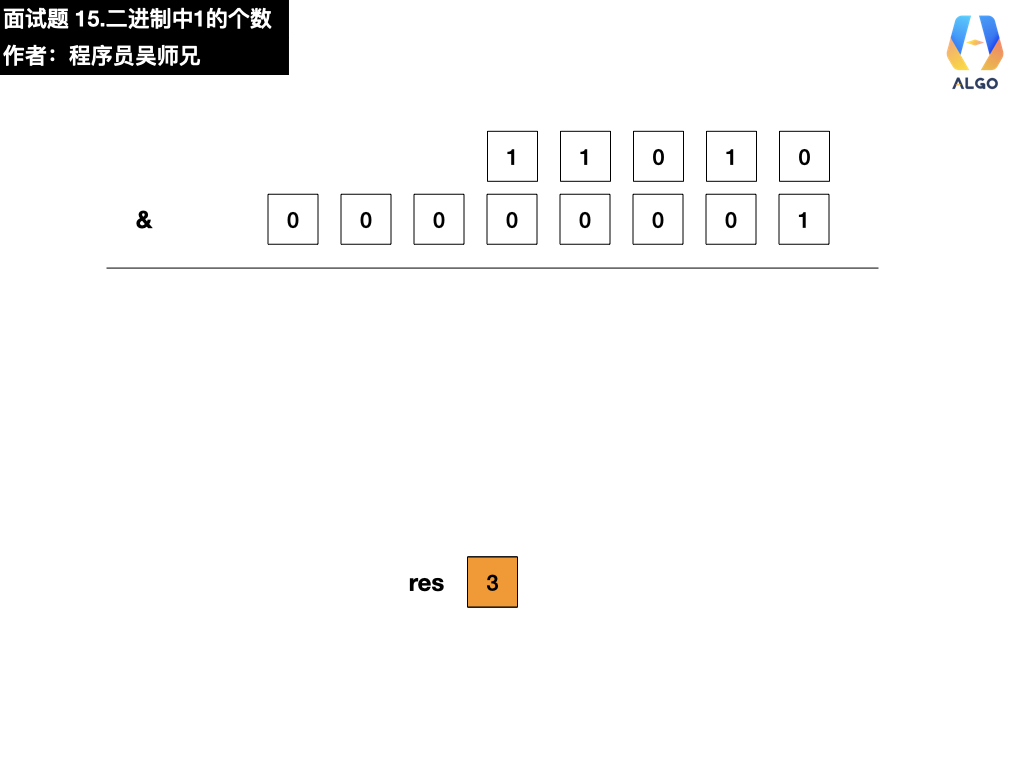

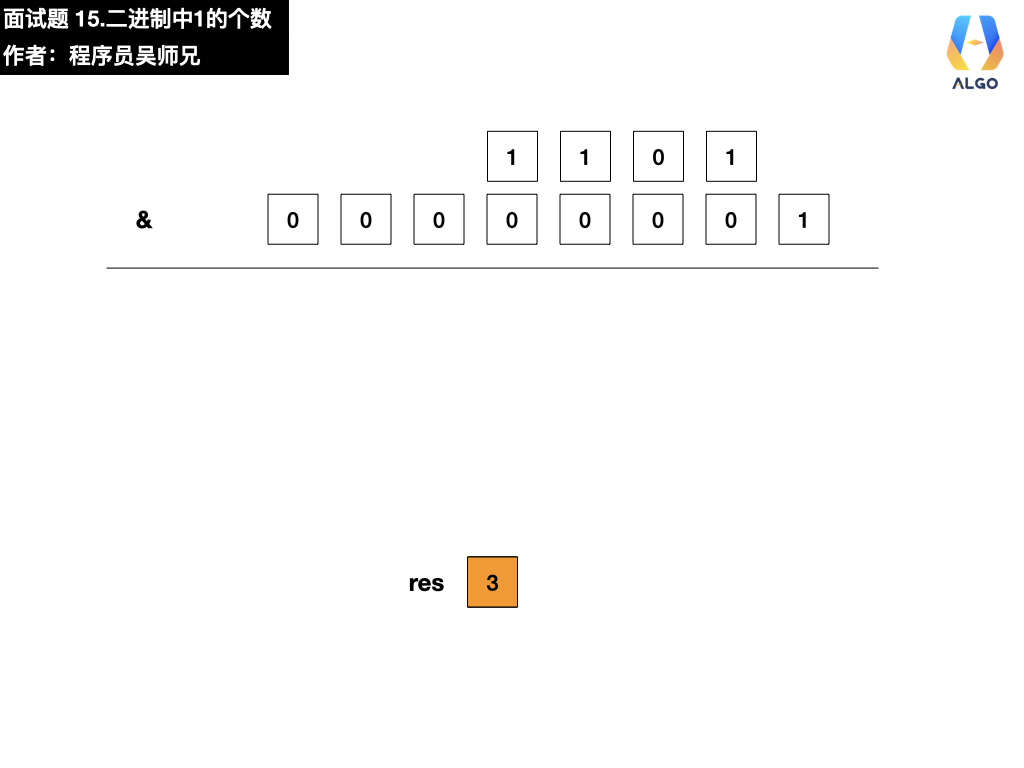

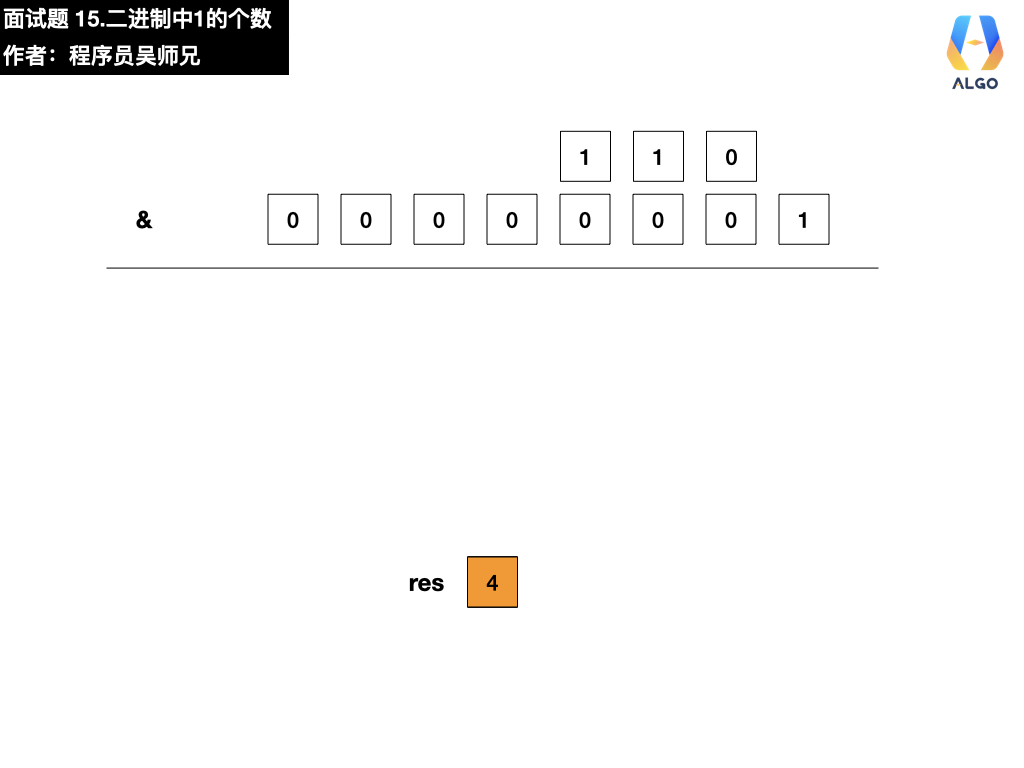
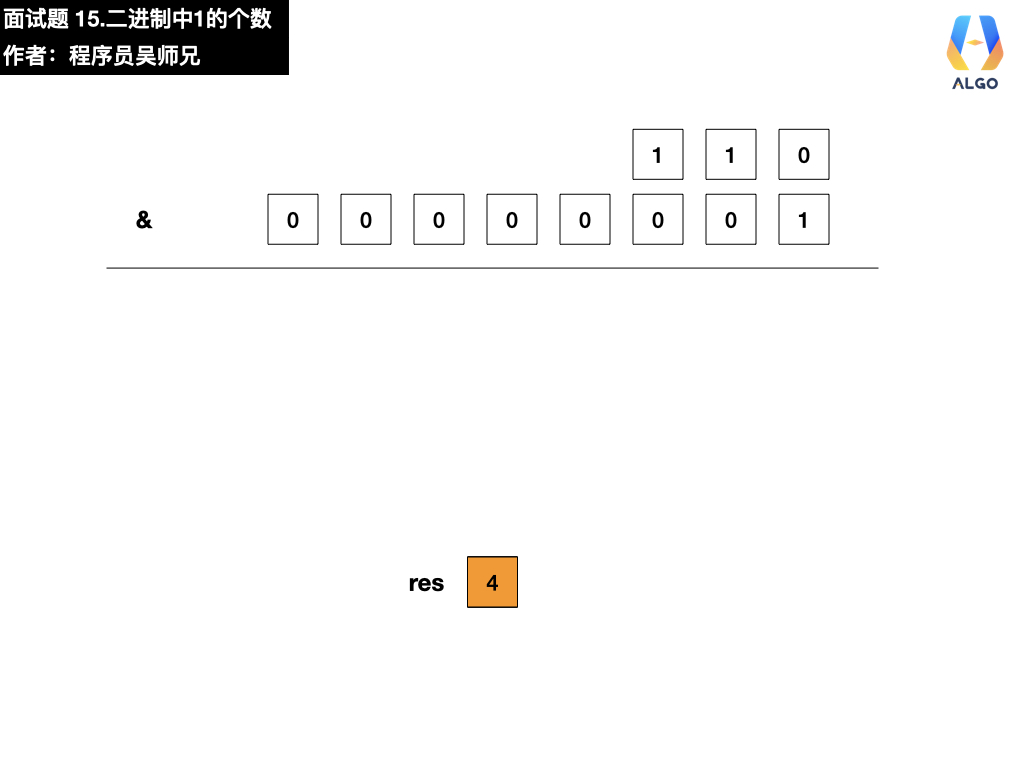
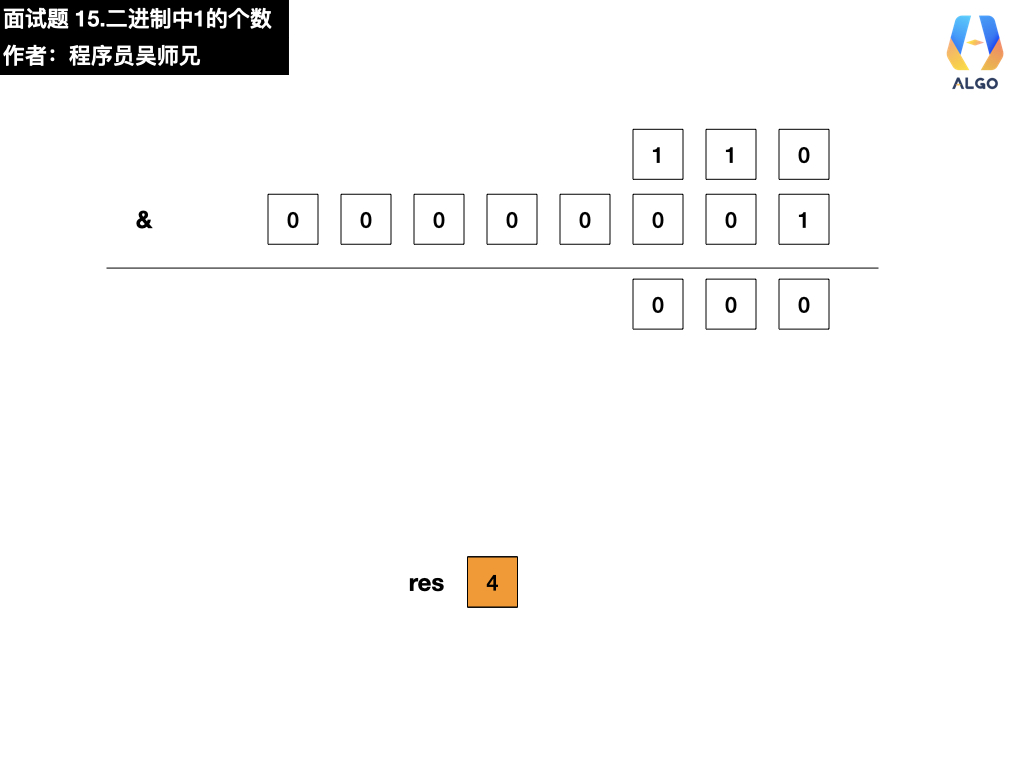
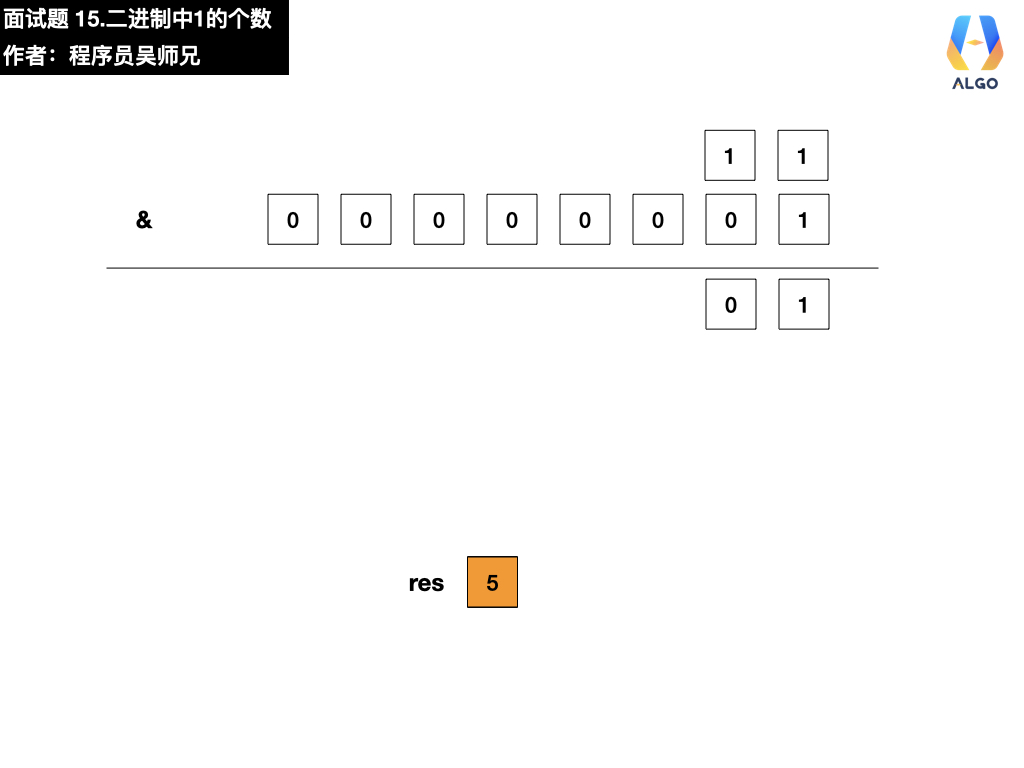
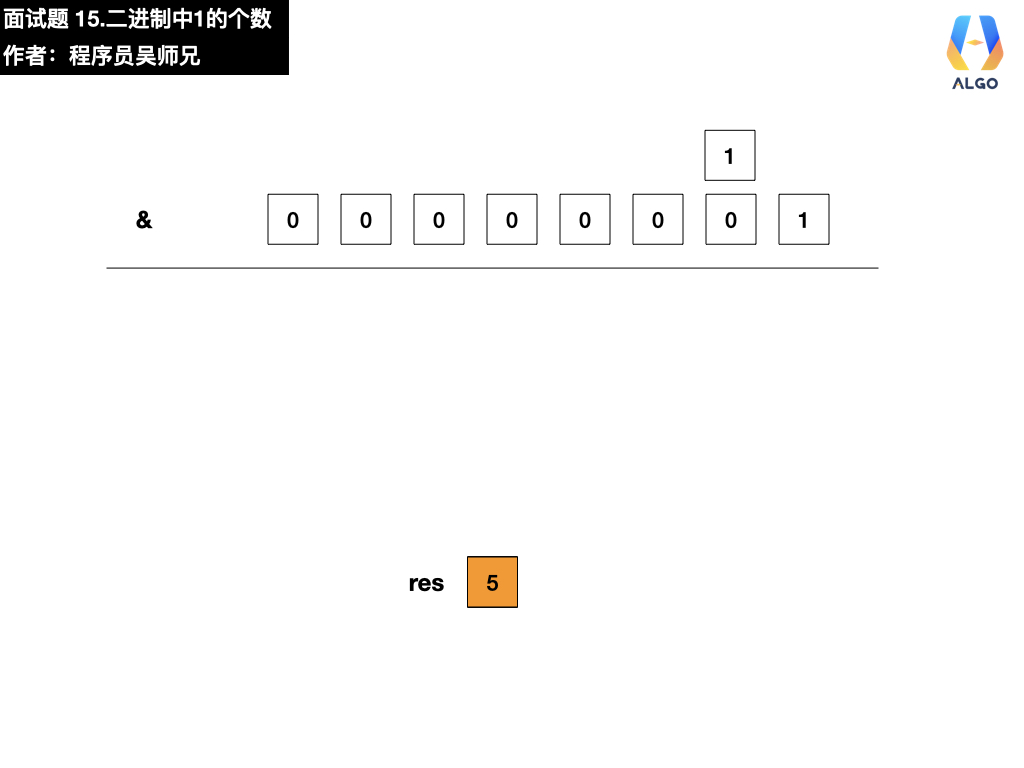
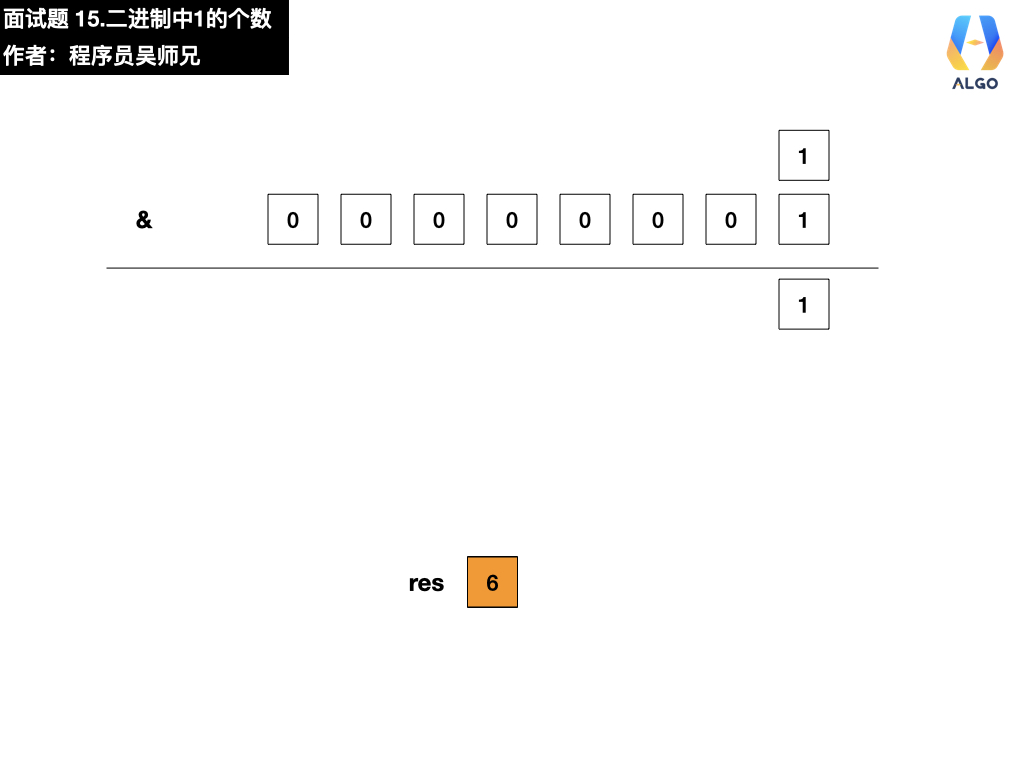
3、匹配
当题目涉及到二进制时,思考的方向一般都是位运算操作。
补充:位运算基本知识
| 符号 | 描述 | 示例 | 运算规则 |
|---|---|---|---|
| & | 与 | A & B | A 和 B 都为 1 时,结果为 1 |
| | | 或 | A | B | A 和 B 都为 0 时,结果为 0 |
| ^ | 异或 | A ^ B | A 和 B 相同为 0 ,相异为 1 |
| ~ | 取反 | ~A | 0 变 1 ,1 变 0 |
| << | 左移 | A<< | 全部左移若干位,高位丢弃,低位补 0 |
| >> | 右移 | A>> | 全部右移若干位,对无符号数,高位补 0 ,有符号数,各编译器处理方法不一样,有的补符号位(算术右移),有的补 0(逻辑右移) |
4、边界
无
三、动画描述
https://www.algomooc.com
四、图片描述
无
五、参考代码
// 登录 AlgoMooc 官网获取更多算法图解// https://www.algomooc.compublic class Solution { public int hammingWeight(int n) { // 用来保存统计到的结果 int res = 0; // 不断的右移 n,直到为 0 while(n != 0){ // 统计结果 res = res + (n & 1); // 无符号右移 1 位 n = n >>> 1; } return res; }} 六、复杂度分析
时间复杂度
时间复杂度为 O(log2n)。
空间复杂度
空间复杂度为 O(1)。
七、相关标签
- 位运算
转载地址:http://tphqz.baihongyu.com/